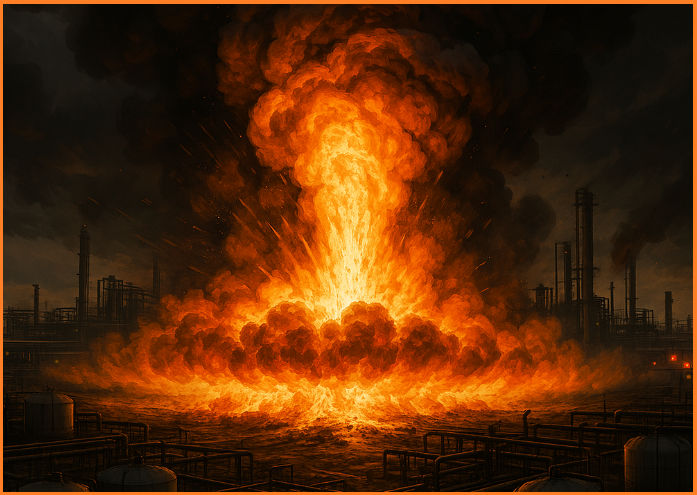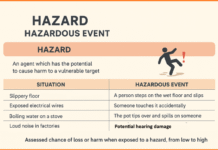An Unconfined Vapor Cloud Explosion (UVCE) is a devastating industrial accident that occurs when a large quantity of flammable gas or vapor is released into an open-air environment, mixes with the surrounding air to form a combustible fuel-air mixture, and is then ignited by a source such as a spark, flame, or hot surface.
Contents
How UVCE Occurs
- Leakage of Flammable Gas or Vapor:
The incident typically begins with an accidental release or leakage of a flammable substance, such as methane, propane, butane, or other hydrocarbons, into the atmosphere from pipelines, storage tanks, valves, or processing units. - Formation of a Vapor Cloud:
Once released, the vapor does not immediately ignite. Instead, it spreads across the surrounding area, forming a large vapor cloud. This mixture remains highly flammable and invisible in many cases, posing a silent danger. - Ignition of the Vapor Cloud:
If the vapor cloud encounters an ignition source—such as static electricity, engine heat, or open flames—it ignites. The result is a powerful explosion that occurs in an unconfined, open area, amplifying the blast effect.
Effects of a UVCE
- Fireball Formation:
A UVCE typically results in a massive fireball upon ignition. The fireball emits intense radiant heat, which can cause severe burns, ignite secondary fires, and damage infrastructure at a significant distance from the source. - Blast Wave:
The explosion generates a powerful blast wave that can cause extensive damage to buildings, pipelines, and equipment. It can also be fatal to personnel in the vicinity. - Secondary Fires and Explosions:
The radiated heat from the fireball can trigger additional fires in nearby structures, tanks, or equipment, leading to a chain reaction of disasters.
Key Characteristics of UVCE
- It occurs in open or unconfined spaces.
- It involves a large volume of flammable material.
- It requires dispersion of the gas to form a flammable mixture with air.
- It needs an ignition source to trigger the explosion.
- It produces heat radiation and shock waves as major hazards.
Safety Measures to Prevent UVCE
- Leak Detection and Repair (LDAR): Rapid detection of leaks and preventive maintenance of pipelines and storage systems.
- Proper Ventilation: To prevent the accumulation of flammable gases in case of minor releases.
- Ignition Source Control: Restricting potential ignition sources in hazardous areas.
- Gas Detection Systems: Use of flammable gas detectors with automatic alarms and shutdown systems.
- Emergency Response Plans: Preparedness for evacuation and fire-fighting in case of vapor cloud detection.
Unconfined Vapor Cloud Explosions are rare but extremely dangerous incidents that can lead to catastrophic loss of life and property. Understanding the causes, recognizing early warning signs, and implementing robust safety measures are essential for industries handling flammable substances. Awareness and preparedness are the strongest tools in preventing such high-impact disasters.





